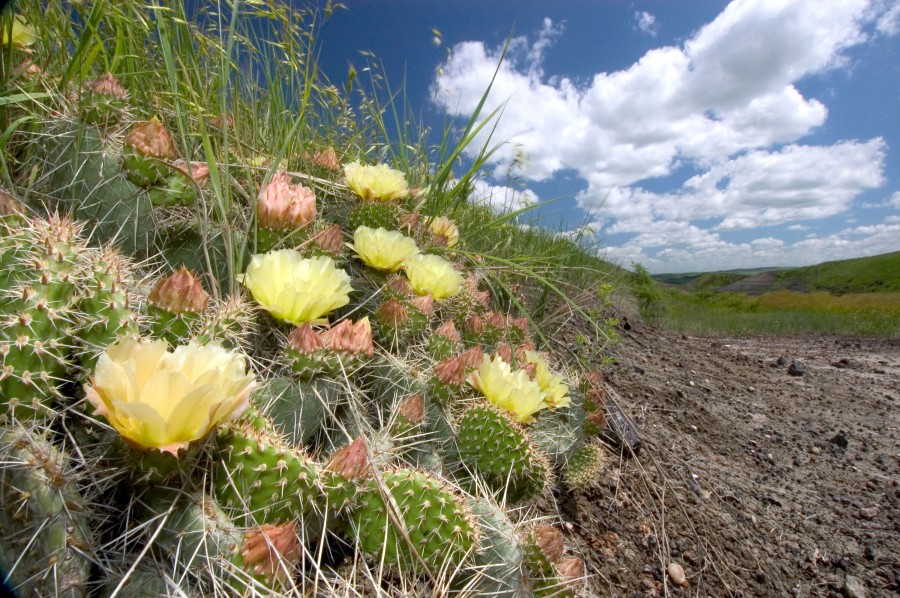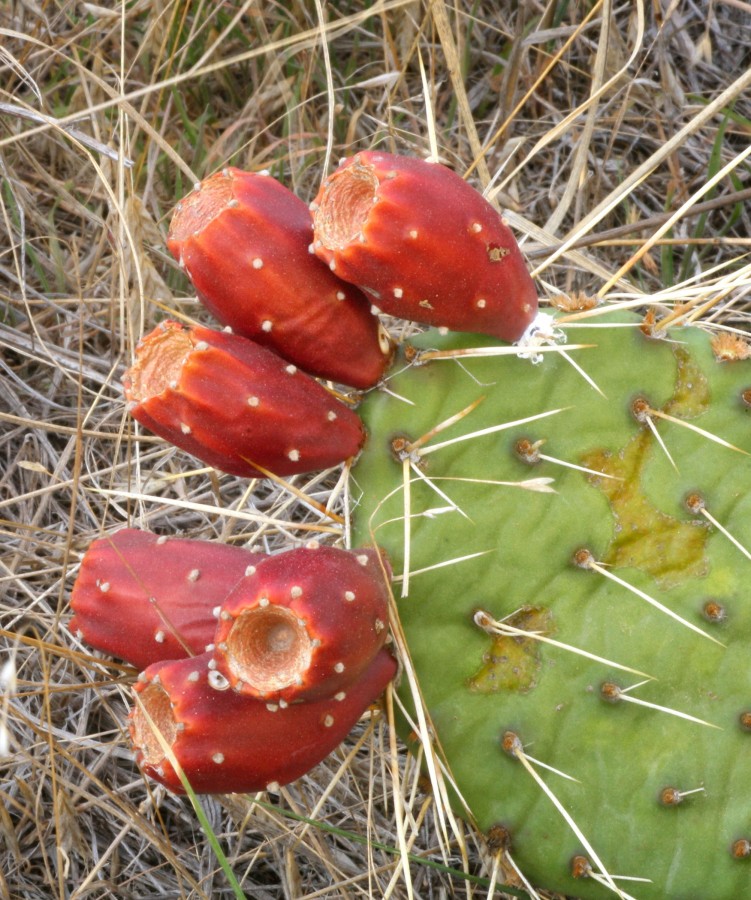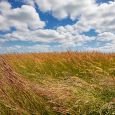The Gift of South Dakota
Subscriptions to South Dakota Magazine make great gifts!
Subscribe today — 1 year (6 issues) is just $29!
Eating Wild Cactus
Wild plants like the prickly pear cactus have served many purposes
 |
| Prickly pear cactus thrive in dry conditions on slopes and hills, like these yellow flowered cacti found along Highway 1804 near Fort Pierre. Photo by Chad Coppess/S.D. Tourism. |
As a young boy Joe Delvaux spent school years with his mother in Yankton and summers with his father in Pickstown, a government town built in the 1950s to house the families of construction workers at Fort Randall Dam. But by the 1970s, Pickstown had dwindled from a high of 5,000 people to less than 100. It could be a solitary setting for a kid who was a “big city” implant.
Delvaux spent hot South Dakota summer afternoons roaming the sun-baked hills surrounding the Missouri River with two older brothers who pointed out plants and insects. “It became natural for me to notice vegetation and to look under rocks,” he says. “It was what we were about and who we were.”
Plants held less interest for Delvaux when he entered high school and later college. But in the summer of 2001, when the National Parks Service opened an office in Yankton, he took a position as a Seasonal Park Ranger. “We were given the freedom to connect an interest to the public and plants were my interest,” Delvaux says. “I got a small library of books to read and took them into the field with me to collect specimens.” He drove back roads and hiked meadows looking for buffaloberry, sumac, sage and chokecherry.
 |
| Photo by Stephen Gassman. |
His research evolved into a park program called Cultural, Medicinal and Edible Plants along the Missouri River. Delvaux often tells his classes about how Meriwether Lewis was introduced to the benefits of chokecherry. During the 1804 expedition, Lewis became very ill with fever and diarrhea. He’d tried the medical treatments of his time, including bleeding, with no alleviation of the symptoms. But then he made some tea from the bark of the chokecherry. He felt so much better that he hiked several miles the next morning.
Prickly pear is among the edible plants that Delvaux brings for the class to sample. It can be found throughout South Dakota and most Western states. He harvests the cactus pads from plants in ditches by Pickstown, near places he wandered as a youth.
Kay Young says in her book Wild Seasons: Gathering and Cooking Wild Plants of the Great Plains that prickly pear cactus pads and ripe fruits are not poisonous — it’s the spines and glochids (barbed hairs) that pose a danger. She recommends handling the pads with tongs or pliers when washing and preparing them. She singes older pads over a flame to remove spines and glochids before cooking, but cooks young pads just as they are, removing the stickers once the pads have cooled.
Delvaux prepares the prickly cactus for his class by filleting the outer skin off the pads, rinsing away the gelatinous juice, patting the pads dry and then cutting them into bite-size pieces. “I’ve cooked it a couple of times — battered it and fried it, but I really prefer it raw and chilled,” Delvaux says. “Fried it tastes a little like fried green tomatoes.”
Cactus Salad
6 cups prickly pear cactus pads, cut into 1/2 inch squares
3 bunches green onion
7 tablespoons salt
1 jalapeno pepper, diced
2 medium plum tomatoes, diced
1/4 cup white onion, finely chopped
1/2 bunch cilantro, chopped
Juice of two Key limes
1/2 teaspoon Mexican oregano
In a medium stockpot, cover the pads with at least three inches of water. Add a bunch of green onions and two tablespoons salt and bring to a rolling boil. Let boil for 10 minutes. Remove from heat and pour into colander. Discard onions and rinse pads in cold water until cool. Repeat the boiling twice using the remaining green onions and four tablespoons salt. This will remove the slimy stuff from the cactus pads. You will now have half the amount you started with.
Mix diced pads, jalapeno, white onion, tomatoes, cilantro, lime juice, oregano and remaining teaspoon salt. Let stand 45 minutes for flavors to blend.
— Recipe From I.M. Cowgirl Magazine
EDITOR'S NOTE – This story is revised from the July/Aug 2010 issue of South Dakota Magazine. To order this back issue or to subscribe, call 800-456-5117.










Comments